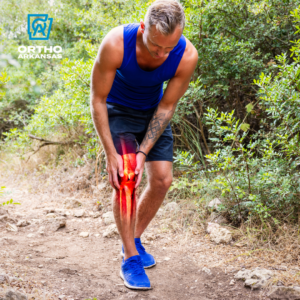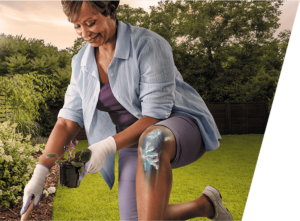Avoid Common Sports Injuries
From bruises to jammed fingers, some sports injuries are simply unavoidable. But there are ways to make playing sports safer. Wearing properly fitted shoes, taking hydration breaks, and most importantly, warm-up and cool-down stretching can keep injuries out of the game.
Every sport comes with its own unique set of common injuries. These are some common injuries for young athletes across any sport and ways to avoid them.
Muscle Injuries
Muscle injuries, on any part of the body, are the most common sports injuries of all. In addition to muscle contusions from contact or overuse, many athletes experience muscle strains, or “pulled” muscles at some time. The hamstring, calf, and inner-thigh are common sites for muscle strains.
How to avoid: Warm-up by shooting, jogging, or walking before stretching, not after. Standing Forward Fold exercises can help stretch the lower back and hamstrings, which can be overworked during athletic play. Start this stretch by standing up straight with your feet together. Bend at the hips and try to touch your calves, ankles, or toes. Be sure to never bounce or stretch past a comfortable zone. Stay in the position for one minute.
Knee Injuries
Severe injuries like ACL tears are more prevalent among high-contact sports, but knee injuries still are very high among all sports in general.
How to avoid: Strengthening the leg muscles helps build better support for the knees. Lunges, squats, and seat stretches are basic leg stretches for any routine. If knees are known to be prone to injury, a knee brace can be a wise preventative measure.
Ankle/Foot Injuries
Injuries to feet and ankles run high: from rolling an ankle to accidentally getting stepped on, there are many ways these injuries can occur.
How to avoid: Preventing foot and ankle injuries is all about support. The right footwear means properly fitted and provides good support around the ankle. Athletic tape is another preventative measure for those prone to ankle injuries. Foot-strengthening exercises, such as toes curls and toe extensions, can help.
Wrist Injuries
Fortunately, wrists rank lower on the list of common injuries for athletes. But that does not mean, these injuries are rare. In fact, 25% of all sports injuries occur to the wrist, hand and forearm.
How to avoid: Awareness during practice and play may help keep hands and wrists injury-free. Spacial awareness means keeping an eye out for other players and avoiding contact when possible.
Basic Sports Safety Tips:
- Wear shoes that fit snugly and have ankle support.
- Use a mouthguard and safety glasses.
- Warm-up then stretch before and after each session.
- Use proper techniques and follow the rules.
- Do not wear jewelry.
When Sports Injuries happen
Playing through the pain doesn’t mean you should always be in pain. It’s time to make an appointment for a sports-related injury when experiencing:
- Consistent pain during or after sports
- Persistent or new swelling joints
- Instability: joints that “give way”
- Pain that doesn’t respond to rest
OrthoArkansas is the leading provider of Sports Medicine in Arkansas and treating urgent sports-related injuries. We’re proud to keep athletes of all ages active and competitive through the largest staff of fellowship-trained sports medicine physicians statewide.













